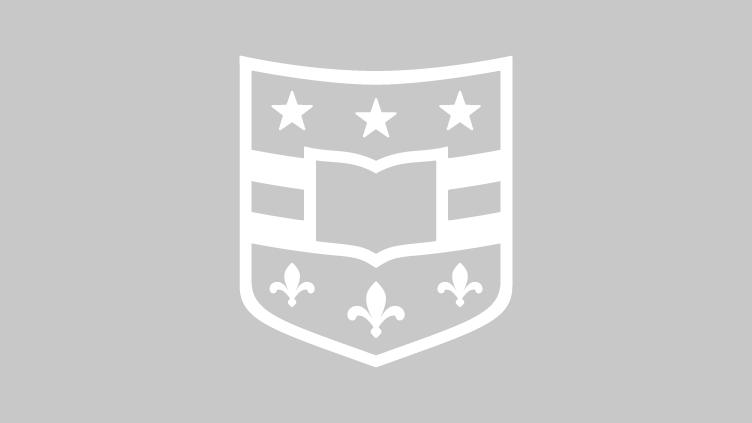Engineer’s $3.5 million grant aims at improving survival of cancer patients
A technology proposed by Lihong Wang, PhD, professor of engineering, may hold the key to detecting tumor cell circulation, potentially enabling earlier therapeutic interventions and curative surgical treatment and improving survival of patients with cancer.
Medical startup hatched at Washington University continues strong performance
Andrew Brimer and Abigail Cohen, May graduates from the
School of Engineering & Applied Science at Washington University in
St. Louis and co-founders of the med-tech startup Sparo Labs, have won
the $150,000 CIMIT Student Technology Prize for Primary Care, bringing
their total competition winnings to more than $275,000.
Two new NSF grants allow Bayly to study brain biomechanics
Philip Bayly, PhD, the Lilyan and E. Lisle Hughes Professor of Mechanical Engineering and chair the Department of Mechanical Engineering & Materials Science, has received a three-year, $429,222 grant from the National Science Foundation to study mehanical properties in the brain.
Ecuador’s former president offers his perspectives on government’s role in health care
Public health is becoming one of the most pressing social concerns facing the global community, and it’s an issue Alfredo Palacio recognized years ago as president of the Republic of Ecuador. Palacio will visit Washington University during its annual Global Health Week Sept. 23-27 and give an Assembly Series talk on “Government and Health Care: Perspectives from a President and a Physician” at 5 p.m. Wednesday, Sept. 25, in Graham Chapel.
WUSTL to host environmental engineering conference
Washington University in St. Louis will host environmental engineering students and faculty from Missouri and Illinois Sept. 20-21 to learn
the latest in environmental engineering technologies and to share research. The 18th Annual Mid-American Environmental Engineering
Conference will be held Sept. 21 in the Stephen F. & Camilla T. Brauer Hall and is sponsored by the Department of Energy, Environmental & Chemical Engineering in the School of Engineering & Applied Science.
URSA grants awarded to six teams
The Office of the Vice Chancellor for Research (OVCR) has announced the six winners of the 2013 University Research Strategic Alliance (URSA) grants. URSA grants provide one-year, $25,000 seed funding to full-time WUSTL faculty members. The URSA program aims to encourage researchers to collaborate across disciplines and schools.
Global health will be showcased in weeklong event
This year’s Washington University Global Health Week has something for everyone. The public can watch Ethiopian dancers, listen to the melodies of Argentina and attend a lecture by the former president and health minister of Ecuador. Attendees also can buy ethnic food, shop for artisan crafts and ask Global Health Scholars, medical students and undergraduates about their outreach efforts.
Entrepreneurship ingrained in students as soon as they arrive on campus
New Washington University students interested in entrepreneurship can get their feet wet before classes even begin. The IDEA program, from the Skandarlis Center for Entrepreneurial Studies, introduces students to the university’s entreprenuerial ecosystem, allowing incoming students to connect with each other and with upperclassmen during a weeklong orientation program.
New video explores university’s academic integrity policy
No student arrives at Washington University planning to
cheat. And yet, 15 to 40 academic integrity cases are adjudicated every
semester. A new video produced by the Office of Student Conduct explores the university’s academic integrity policy and why such a policy matters.
12 students, graduates receive Fulbright scholarships
Washington University in St. Louis once again has strong representation in the prestigious Fulbright program, with 12 current or recent students receiving Fulbright U.S. Student Program scholarships to teach English or to conduct research abroad during the 2013-14 academic year. The students share their thoughts and plans, in their own words.
View More Stories
